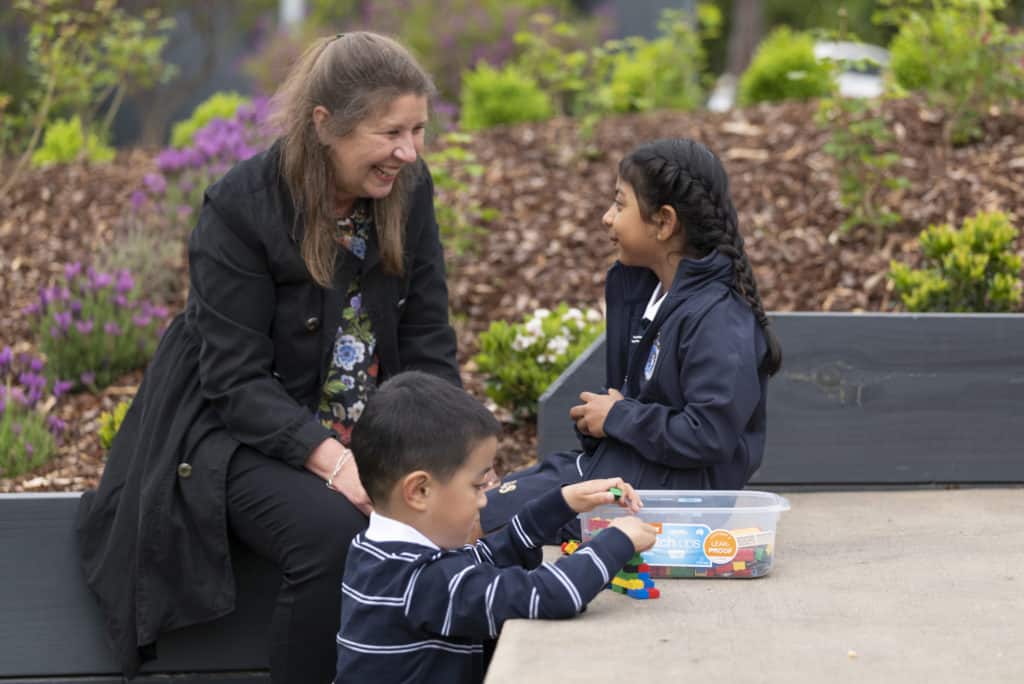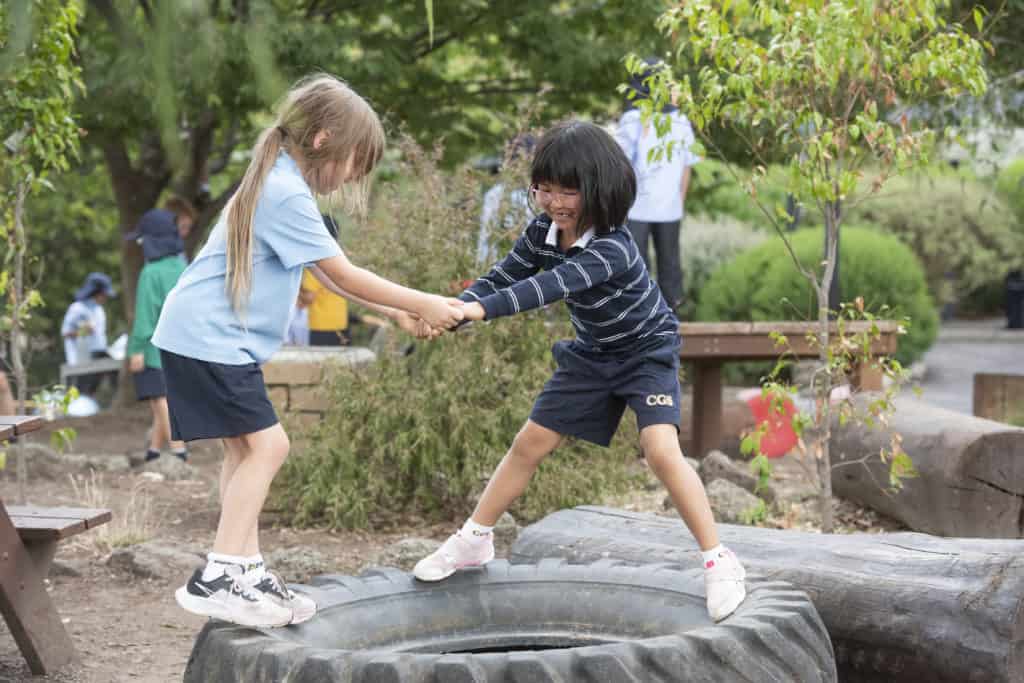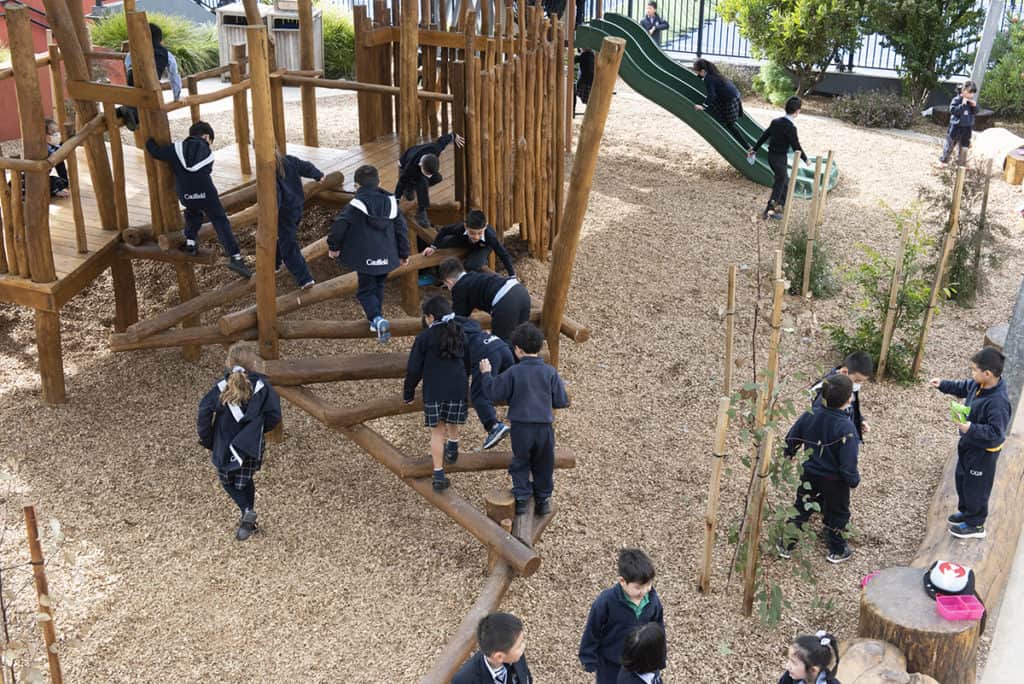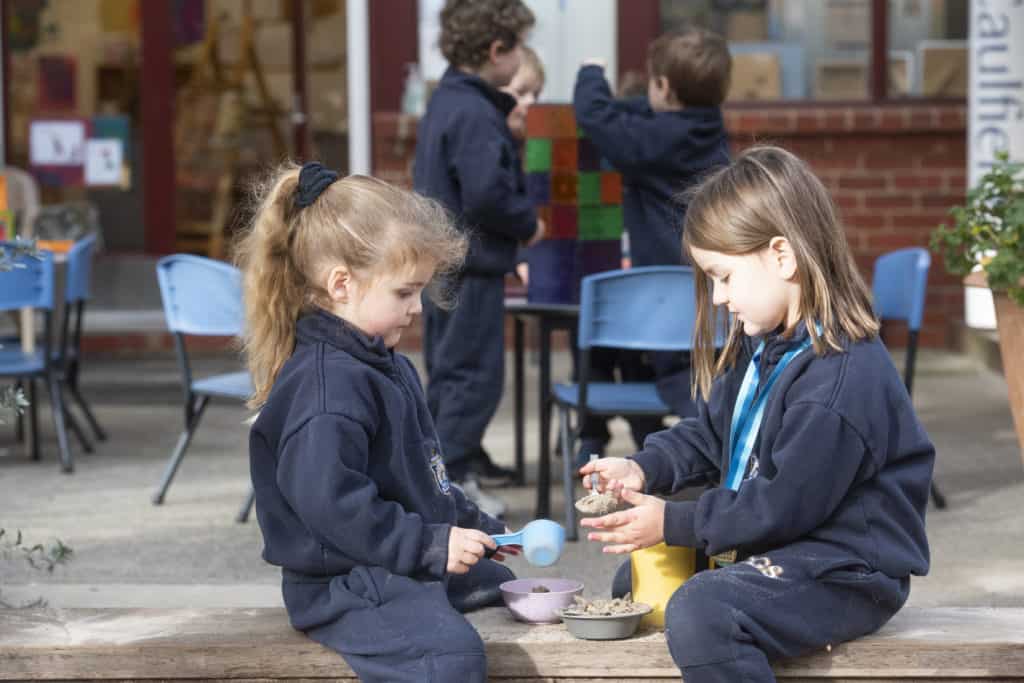Creating spaces in which to play and grow
Mary Grummet, Head of Early Learning Centres at Wheelers Hill and Malvern campuses, reflects on how the design of our School’s playgrounds and outdoor learning environments reflects the students’ interests.

“Playgrounds are wonderful places where children can further develop their motor skills and their knowledge and understanding of the world,” says Mary. “Children develop and explore social skills and problem-solving skills. They can practise skills which help them move around safely. They take these skills with them when they visit parks, gardens, the beach and the bush with their families.”
At the Wheelers Hill Campus, children can find a reading garden outside the library, scale a rock-climbing wall and play in nature at Tinker Alley, which is designed to give them the chance to engage in STEM-based play.
Before opening its new Kindergarten, Caulfield Grammar asked children what was important to them and incorporated their suggestions into the play-space design.
“We wanted to incorporate a ‘wild’ space which children could explore,’’ Mary says. ‘‘A collection of bushes provides a tempting space for creating cubby houses. Open spaces, ladders and moveable boards allow us to create different levels for children to use.”
There are also different textures for the children to engage with, from real grass to rocks, paving and sand. Water troughs enable them to explore STEM concepts such as water capacity, measurement, floating and sinking.


Caulfield Grammar School’s Malvern Campus has a cottage garden nestled at the front of the campus, while the ‘Patch’ is home to the School’s veggie garden and much-loved resident chickens. The Wominjeka adventure playground is named after the term for ‘welcome’ in the language of the Wurundjeri people.
“There are areas where children can build, where they can run, where they can find a quiet place to think and to wonder,” says Mary.
Not only are playgrounds environments for fun, but they can help set children up for success down the track, she adds.
“Nurturing wellbeing in the junior years helps to build students’ social and emotional toolkit, enabling them to thrive throughout secondary school and beyond. Building a safe and inclusive environment and immersion in nature is key to this.”



